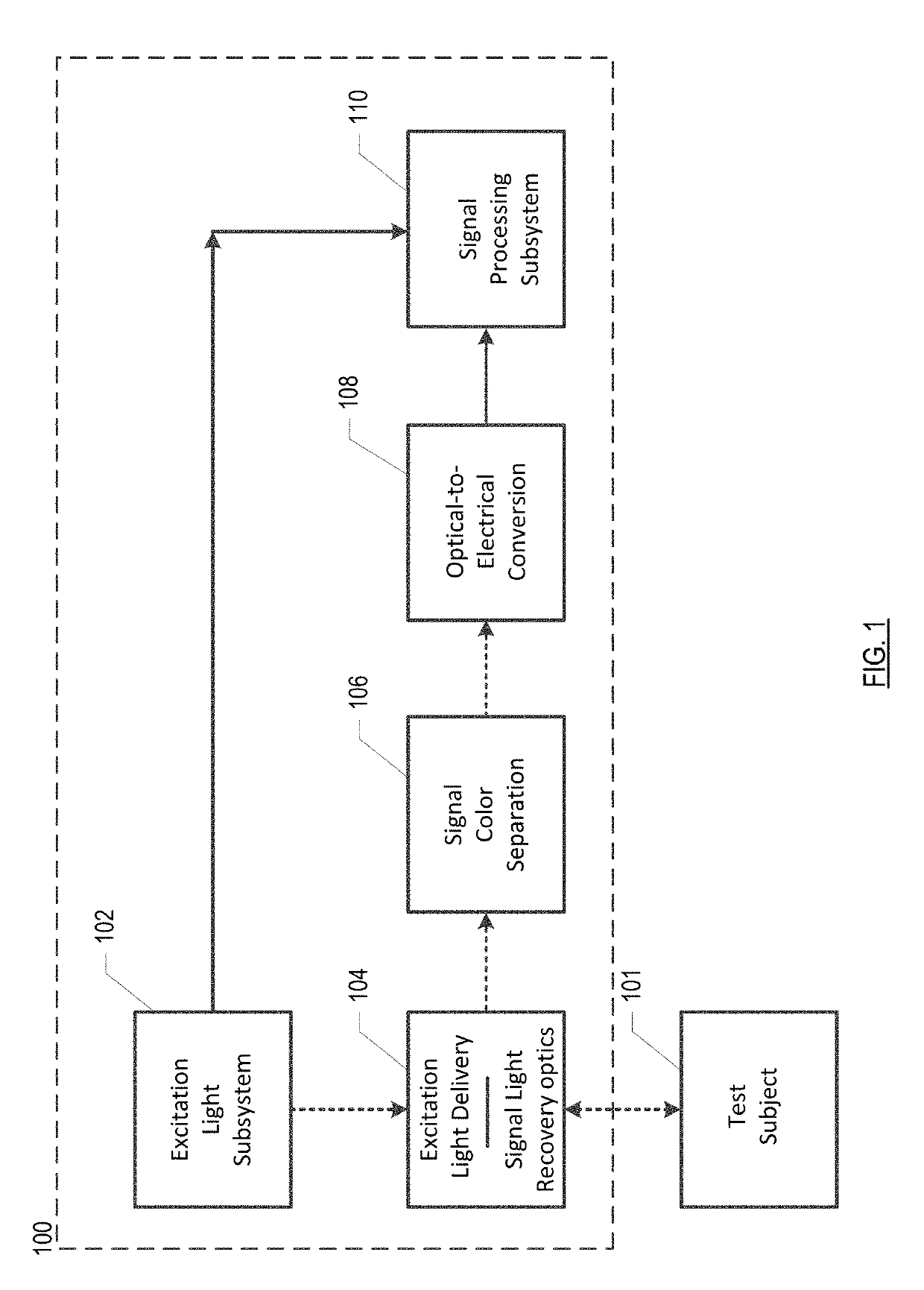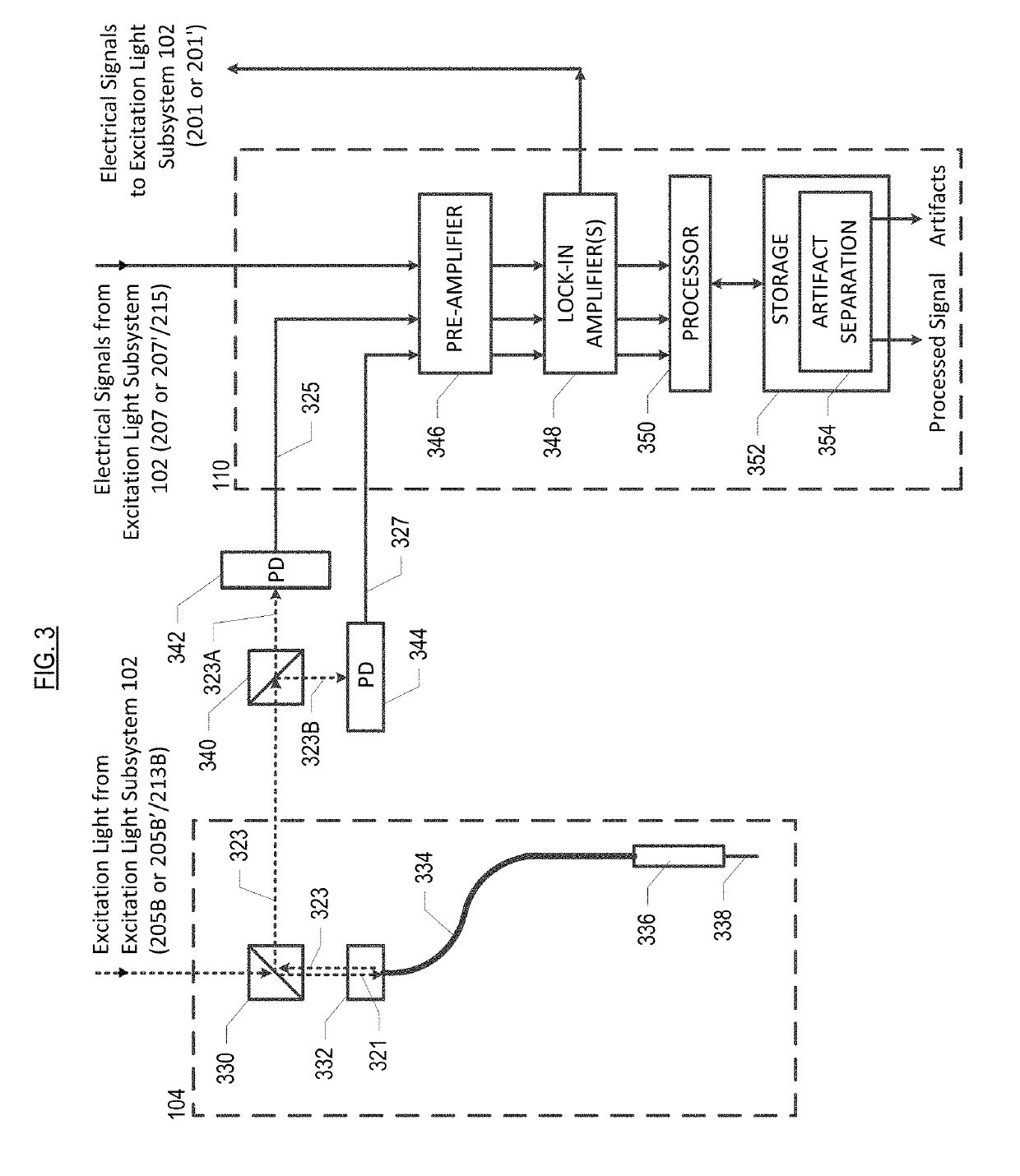Method and apparatus for optical recording of biological parameters in freely moving animals
a biological parameter and optical recording technology, applied in the field of measuring biological processes in freely moving animals, can solve the problems of general cell biological interpretations of both normal and abnormal, general cell biological interpretations of non-laminar brain structures, and general uninformative analyses in non-laminar brain structures, etc., to reduce low frequency noise and reduce cross talk
- Summary
- Abstract
- Description
- Claims
- Application Information
AI Technical Summary
Benefits of technology
Problems solved by technology
Method used
Image
Examples
first embodiment
[0066]FIG. 2A depicts an excitation-light subsystem in accordance with the present teachings. Subsystem 102-1 includes a single excitation-light source 220, beam splitter 226, and photodetector 228 in a free-space-optics arrangement and interrelated as shown.
[0067]Light source 220 generates light 205. In this embodiment, light source 220 is a laser, although other sources of light may suitably be used in combination with a filter, etc., as appropriate, to provide a narrow-band source. Light source 220 is modulated by signal 201, which is generated by one of lock-in amplifiers 348 in signal processing subsystem 110. Pre-processing light 205 in this fashion reduces low-frequency noise in the measurement of fluorescence at photodetectors 342 and 344 (see FIG. 3).
[0068]Light 205 is directed to beam splitter 226, wherein, in the illustrative embodiment, it is divided 50 / 50 in intensity. Portion 205A of light 205 is directed to photodetector 228, which generates corresponding electrical-d...
second embodiment
[0069]FIG. 2B depicts an excitation-light subsystem in accordance with the present teachings. Subsystem 102-2 includes light sources 220A and 220B, phase shifter 224, beam splitters 226A, 226B, 230, and photodetectors 228A and 228B.
[0070]Light source 220A generates light 205′. In this embodiment, light source 220A is a laser, although other sources of light may suitably be used in combination with a filter, etc., as appropriate, to provide a narrow-band source. In the illustrative embodiment, Light 205′ is modulated at a single frequency by signal 201′, which is generated by one of lock-in amplifiers 348 in signal processing subsystem 110.
[0071]Light source 220B generates light 213 having a different wavelength than light 205′. Light 213 is modulated at a single frequency by signal 201′. Light 213 is also phase shifted by 90 degrees relative to light 205′ by phase shifter 224. The phase shift between 205′ and 213 will help prevent cross talk between the fluorescence that is ultimate...
PUM
 Login to View More
Login to View More Abstract
Description
Claims
Application Information
 Login to View More
Login to View More - R&D
- Intellectual Property
- Life Sciences
- Materials
- Tech Scout
- Unparalleled Data Quality
- Higher Quality Content
- 60% Fewer Hallucinations
Browse by: Latest US Patents, China's latest patents, Technical Efficacy Thesaurus, Application Domain, Technology Topic, Popular Technical Reports.
© 2025 PatSnap. All rights reserved.Legal|Privacy policy|Modern Slavery Act Transparency Statement|Sitemap|About US| Contact US: help@patsnap.com



